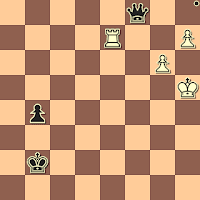Recently Bill Wall sent me 16 of his Jerome Gambit games that were Human + Computer vs Computer encounters. Such teamwork is sometimes referred to as advanced chess, or cyborg chess, or centaur chess.
Over the years, I have posted games from Human vs Computer matches (including the legendary 1993 Fisher-Kirshner - Knight Stalker battles, and the rolling 2006 RevvedUp - Fritz 8 - Crafty 19.19 - Hiarcs 8 - Shredder 8 - Yace Paderborn mayhem) as well as many Computer vs Computer games, but I think this is the first centaur chess I have presented.
The results are interesting - even if it is difficult to assign the relative impact that the human had on the play. Also, the time controls, which affect the strength of computer programs, are not known.
Over all, White scored 4 - 9 - 3 (34%), which would be unimpressive for a normal opening under normal circumstances, but which seems - as with all Jerome Gambit matches - a bit "high" for a many-times-refuted opening.
A little more insight is available by breaking the games down into 4-game matches.
Crafty vs Stockfish + Wall, for example, yielded 2 wins for Black when played by the team; and, likewise, 2 wins for White when played by the team. With all due respect to Dr. Robert Hyatt's computer engine, it appears it could have been simply outplayed by its stronger computer opponent. Who played what color did not seem to matter.
On the other hand, the Komodo 5 vs Rybka + Wall match, which ended with a score of 2 - 2 - 0, was composed of 4 wins by Black. Neither engine, it appears, was able to ovecome the "handicap" of playing the Jerome Gambit.
The Hiarcs 9 vs Critter + Wall match seemed a reflection of the comparative strengths of the computer programs, as Hiarcs 9 lost 2 games as White, and could only manage a draw as Black.
Interesting, also, was the Fritz 12 vs Houdini + Wall match. The team was 1 - 0 - 1 as White, and 1 - 0 - 1 as Black, suggesting that Houdini was the brighter computer program.
Looking at a couple of lines of play, 1.e4 e5 2.Nf3 Nc6 3.Bc4 Bc5 4.Bxf7+ Kxf7 5.Nxe5+ Nxe5 6.d4 scored 2 - 5 - 1, while 6.Qh5+ scored 2 - 4 - 2, not much of a difference.
I will be sharing some of the games, taking a look at what "theoretical" enlightenment they bring.



























